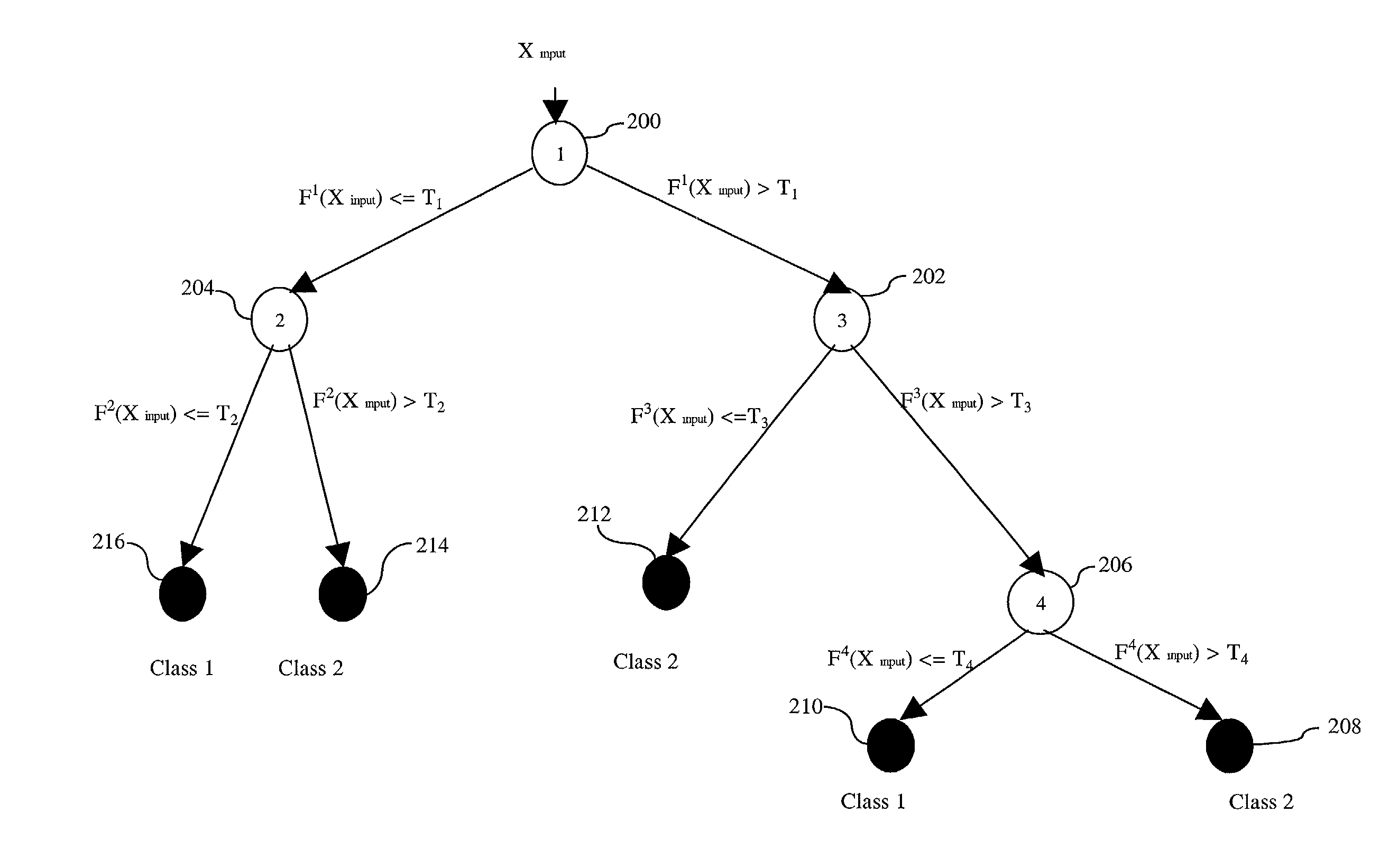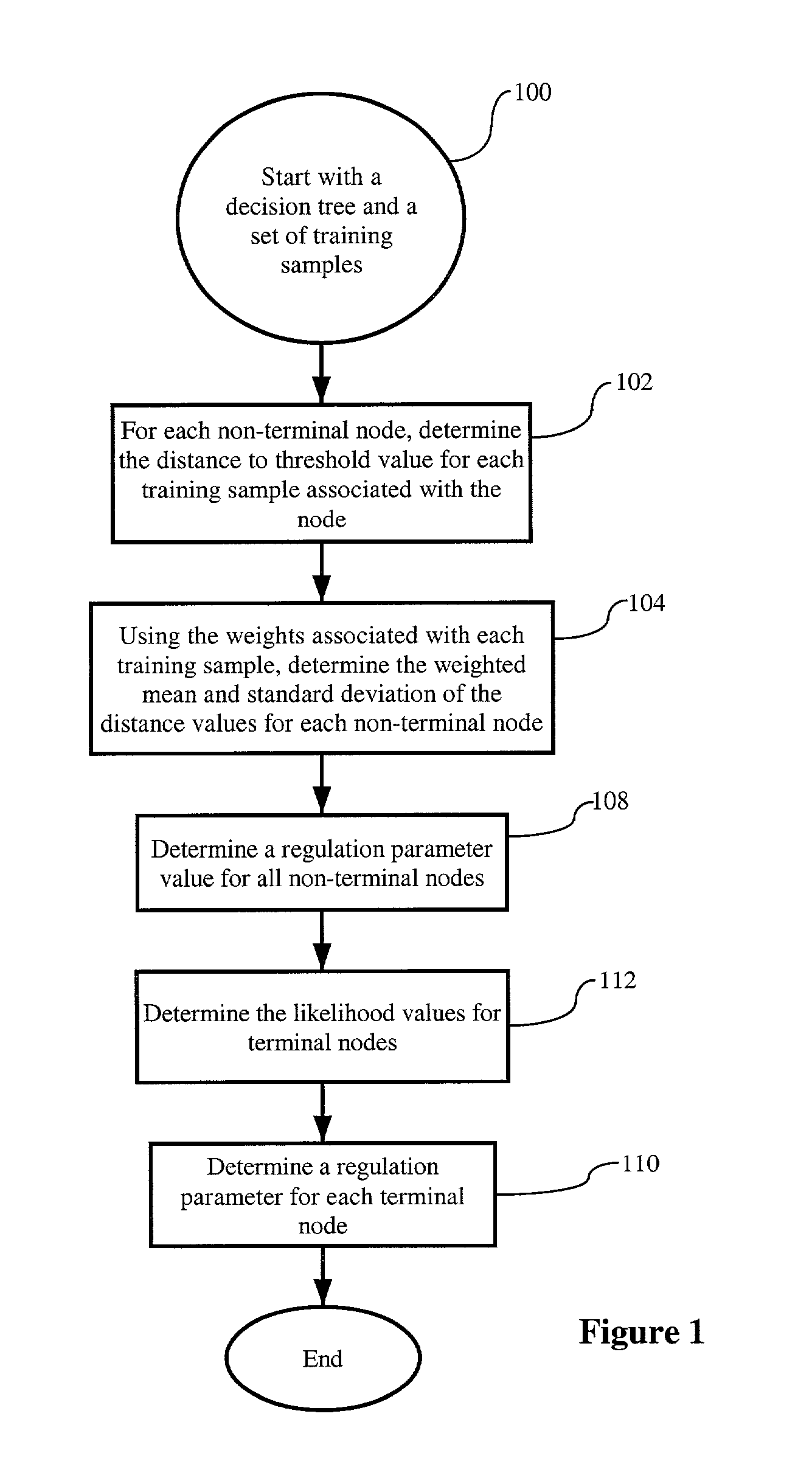Regulation of hierarchic decisions in intelligent systems
- Summary
- Abstract
- Description
- Claims
- Application Information
AI Technical Summary
Benefits of technology
Problems solved by technology
Method used
Image
Examples
Embodiment Construction
[0025]This invention provides a method to regulate the quality of decision rules automatically by providing an adjustable balance between crisp and soft decisions to match an application. Methods for incremental updating of the decision structure by additional learning samples from the same classes and for adding new classes are taught. A preferred embodiment of the invention can be constructed using a decision tree hierarchical decision structure.
[0026]A decision tree makes a decision using hierarchical decision structures implemented as a tree. (Breiman L., Friedman J. H., Olshen R. A. and Stone C. J., “Classification and Regression Trees”, Chapman and Hall / CRC, 1984 pp18–58) A tree consists of at least one non-terminal node and at least as many terminal nodes as the number of decision outcomes to be decided. Each outcome has associated at least one terminal node, and the non-terminal nodes represent various collections of mixed outcomes. The root node represents t...
PUM
 Login to View More
Login to View More Abstract
Description
Claims
Application Information
 Login to View More
Login to View More - R&D
- Intellectual Property
- Life Sciences
- Materials
- Tech Scout
- Unparalleled Data Quality
- Higher Quality Content
- 60% Fewer Hallucinations
Browse by: Latest US Patents, China's latest patents, Technical Efficacy Thesaurus, Application Domain, Technology Topic, Popular Technical Reports.
© 2025 PatSnap. All rights reserved.Legal|Privacy policy|Modern Slavery Act Transparency Statement|Sitemap|About US| Contact US: help@patsnap.com



